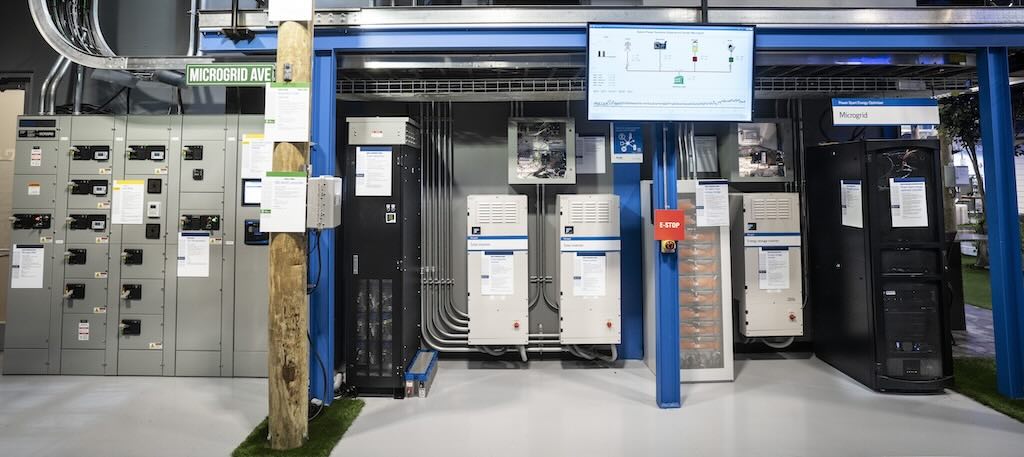VFD impact on TEFC motors, squirrel cage rotors and condition monitoring issues discussed.

Tom Bishop, P.E., Senior Technical Support Specialist for the Electrical Apparatus Service Association (EASA) was the presenter at the May 28 Plant Engineering Webcast, "Energy Management Decisions: Repair or Replace Electric Motors?" An archive version of the Webcast is now available on the Plant Engineering Website.
There was not enough time during the Webcast to answer all viewer questions, so Bishop has answered additional questions here.
Q: How do VFDs affect hi E TEFC motors with fans made smaller for efficiency?
A: If the TEFC motor is rated for inverter-duty the external fan is designed to provide adequate cooling over the rated speed range of the motor. If the fan is not adequate for the speed range, the motor manufacturer equips the motor with an independently powered constant speed fan.
If the motor is not inverter duty-rated, the cooling fan may not provide adequate airflow for reduced speed operation regardless of the type of motor (pre-EPAct, EPAct, or NEMA Premium).
Q: Does EASA have a program to plug in electric cost, operating hours, and efficiency to calculate savings with a new motor?
A: Although EASA does not have a savings calculator on our Website, we are a sponsor in the Motor Decisions Matters (MDM) campaign. A simple savings calculator can be downloaded from the MDM website: www.motorsmatter.org/tools/index.asp
Q: For motors in the range of 5 to 50 HP with ball/roller bearings, how long can such design motors be in climate controlled storage (spares stock, etc.) with no shaft rotation before the condition of the motor is considered questionable for service?
A: In addition to climate control, motors should be stored in a vibration-free environment. If the shafts are not rotated the motors should be visually inspected and test operated to check for bearing noise prior to installation. The inspection and test operation prior to installation are good practices even if the shaft has been rotated during storage.
Q: How difficult is it to repair fabricated AC squirrel cage rotors—you list this type of failure as not economically repairable?
A: In general, squirrel cage rotor rebuilding (rebarring) is a labor intensive process. Die cast bars are usually removed in a chemical process; and fabricated bars are manually removed one at a time. Sometimes the thin steel disc laminations must be disassembled in order to remove the rotor bars. Therefore this labor intensive repair activity is not usually economically justified unless the motor is relatively large or has special features.
Q: When discussing the repair versus replacement issue, we frequently do not have the efficiency of the older motor. For large horsepower motors, the difference is not that large between old motors and current high efficiency motors. Is there a source to help estimate the efficiency of the older motors?
A: Small and medium motors manufactured prior to the EPAct regulations rarely had efficiency levels on their nameplates. Further, the methods for testing of motor efficiency were refined in the era beginning with EPAct. What this all means is that even if a pre-EPAct motor rated efficiency was known, the level of accuracy would be questionable. A more practical but partially after-the-fact approach to assessing the impact on energy consumption would be to measure the motor power input for a specific load prior to replacement, and measure the power input after the replacement motor is installed. That would provide a direct comparison of energy consumption for a specific application.
Q: Is there a condition monitor solution for motor? Is vibration condition monitor is a good way? Is there a solution you recommend?
A: Condition monitoring of motors and driven equipment using vibration spectrum analyzers is a widely accepted method for determining the present mechanical condition of a machine, and to make predictive judgments regarding when service or repairs are needed.
Electrical measurements that can provide useful information to assess motor operating conditions include measuring and comparing line voltages and currents; and testing insulation resistance. Similarly, temperature can also be monitored.
Q: What test can a motor do to assure current motor efficiency after repair?
A: If the as-manufactured no load power input (no load watts) for the motor is known, the post-repair value can be compared to it. However, the as-manufactured power input is not often available from many manufacturers. A more practical method is to follow known good practices that include testing at key decision points during repair, which is the approach used in the EASA Accreditation Program for service centers.
Q: How can efficiency of a repaired motor be verified if no dynamometer test is used?
A: Verification of motor efficiency requires load testing under rigorously controlled conditions, using instrumentation and methods of extremely high accuracy. Consequently the cost of such a test could easily exceed the price not only of repair, but of a new motor. Further, even new motors are not subjected to such testing. The practical approach for a repair is to follow good practices as mentioned in the reply to the previous question.
Q: Are there any operating temperature standards under the EASA program associated with stator windings during normal operations.
A: The standards for motor winding operating temperature limits are given in the National Electrical Manufacturers Association (NEMA) standards document Motors and Generators 1 (MG1). The MG1 standards provide temperature rise limits based on motor enclosure, service factor, power rating, type of measurement (resistance or temperature detector), insulation class rating, and ambient temperature.
Q: How do you know the real efficiency in old motor if you do have the name plate?
A: If the motor does not have a nameplate it may be possible to locate identifying information such as a serial number stamped into the frame or shaft that can be traced back to the original information if the motor manufacturer is known. However, that is rarely the case. Thus, in general, if the motor lacks a nameplate the efficiency cannot be estimated. Further, it may not be possible to accurately determine the motor power, voltage and current ratings.



